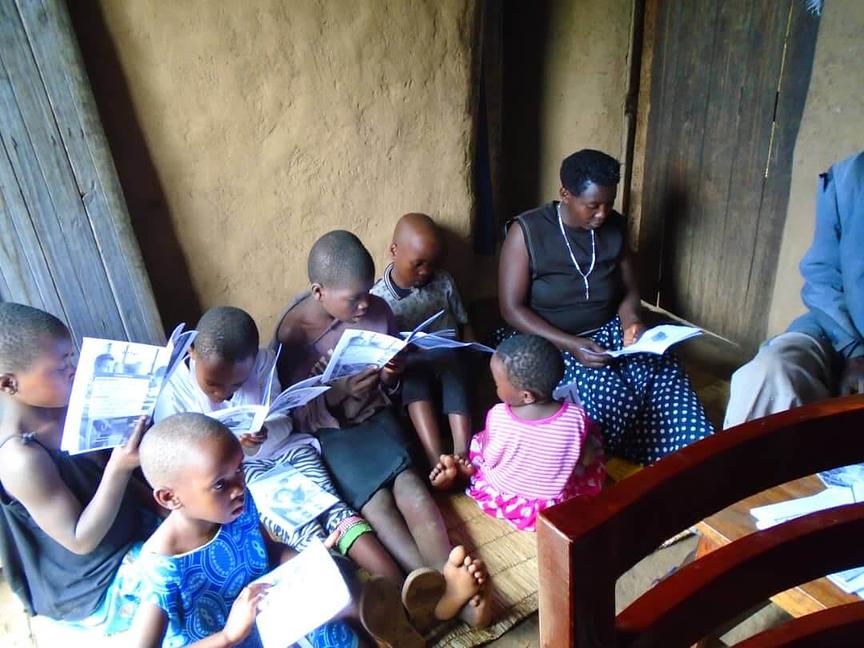The community library and empowerment center is a whole community approach model that was adapted by PeerLink Initiative Uganda (PELI-U) a community rooted children, youth, women and elderly focused non government organization. Our first community library was set up in 2013 and named Nyarushanje Community Library and Empowerment Center after Nyarushanje Subcounty a rural community in South Western Uganda, Rukungiri District. Nyarushanje Subcounty has a total population of 44,883 (20,874 Males and 24,009 Female).
Through the community library and empowerment center PELI-U promotes a holistic development of communities in Uganda by; increasing access to quality education through literacy promotion for children and their families, provision of financial assistance to children to increase access to education, improving the socio-economic well being of households through entrepreneurship and skills development for youth and women and strengthening the health of communities through increasing children, youth and women access to health education and services.
The multiple literacy promotion programs/activities implemented through the community library and empowerment center include provision of reading space, reading materials and lobbying and advocating for a reading hour in primary schools once a week. We carry out school based reading in schools where our library staff takes books/readers to community schools since there are no functional libraries in the rural schools and communities. We have a team of 9 community based volunteers (1 from each of the 9 Parishes/smaller communities that make up Nyarushanje Subcounty) who spearhead reading in far off communities where members cannot walk to the static library. To strengthen children’s reading abilities and create a supportive environment at home we are implementing the Library Scholar reading program through which we support 20 primary three pupils with scholarships and work with 20 households to implement household reading activities, print and provide readers to children at home and facilitate reading sessions during the weekly reading hour.
Within the same library and empowerment center we have a skills development through which we provide children, youth and women with practical skills training in skills manual trade (tailoring, cookery, computer skills, gardening, etc). We also build the capacity of teachers to reflect on their practice, create content jointly working in subject teams and integrate participatory methods of teaching and learning in their teaching and learning process. We provide teachers with opportunity to access computer resources and use library facilities to be innovative, creative and access internet.
There is a health unit department through which we provide health education and link community members with health service providers.

